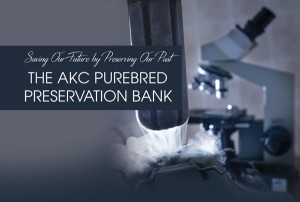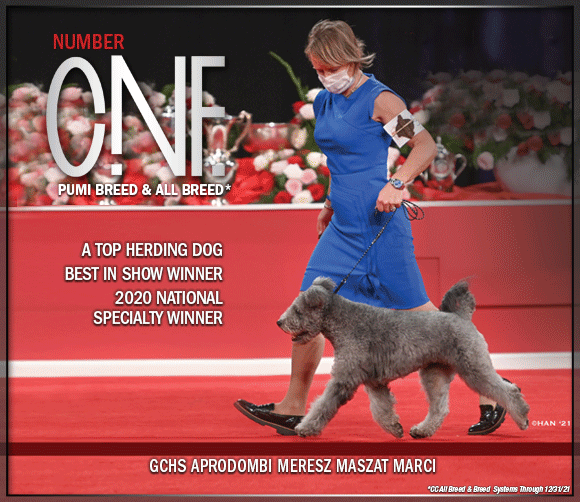Saving Our Future by Preserving Our Past: The AKC Purebred Preservation Bank
Click here to read the complete article
286 – January/February, 2022
 By Caroline Coile
By Caroline Coile
Of our 196 recognized breeds, literally half–98 of the breeds–are considered low entry breeds.” That’s according to Dr. Charles Garvin, who has exciting news for the future of purebred dogs.
Many of these breeds are also low registration and breeding breeds, he goes on to explain. For example in 2020, when registrations were soaring overall, 14 breeds registered fewer than 10 litters. It’s a modern day genetic bottleneck for these breeds, similar to that faced by many breeds during World War II.
It’s hard to imagine now, but Rottweilers had five consecutive years of fewer than ten dogs registered per year. Bernese Mountain Dogs once had five years in a row of zero dogs registered…Alaskan Malamutes and Flat-Coated Retrievers had three consecutive years of zero dogs registered. Some breeds have had to resort to crosses with other breeds just to keep their genetic diversity alive.
Is there a way to prevent it from happening again? Frozen semen could prove a lifeline to the past, bringing it forward to provide genetic diversity for the future. And while we’re not forgetting the equally vital input of females, at present frozen eggs or embryos are not a viable choice for dogs.
The ability to freeze canine semen has been around since 1969, but it didn’t begin to be widely used by American breeders until the 1980s and ‘90s. How many dogs from that era do you know that have semen presently available? In some cases it’s been used up, but in far more cases it’s been abandoned. It costs roughly $100 a year to store semen. A dog stored from 1991 has about $3000 in storage fees invested in keeping his semen viable—and that’s often for just enough semen for a couple of litters.
Click here to read the complete article
286 – January/February, 2022

Short URL: http://caninechronicle.com/?p=221762
Comments are closed











